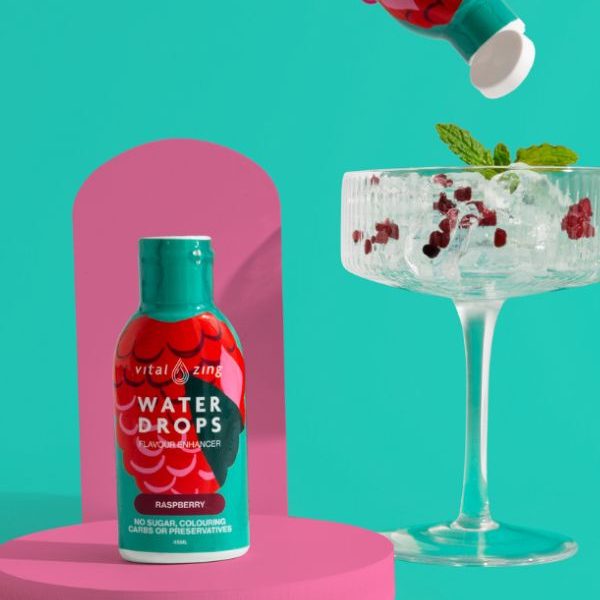
Receiving a diagnosis of insulin resistance can be nerve-wracking. It is a diagnosis that can lead to a host of further health complications if not addressed and managed properly.
But the good news is that with lifestyle changes, reversing insulin resistance is possible!
This is not to say that it will be easy; the lifestyle changes require some thought, planning, and consistency. But they are certainly doable!
Here’s a look at insulin resistance, what you need to know about the condition, and some details on what you can do to reverse it.
What is Insulin Resistance and Who is Prone to It?
Insulin resistance is a condition where cells in the muscles, fat, and liver are unable to properly respond to insulin, impacting the body’s ability to take up glucose from the blood.
Insulin is produced by the pancreas and works to assist the cells in taking up glucose to use as energy. In insulin-resistant individuals, this process falls apart. The glucose does not get used and the pancreas continues to produce insulin to make up for the lack of response at the cellular level.
Over time, this increases blood glucose and can lead to conditions like type 2 diabetes and metabolic syndrome. Metabolic syndrome is a cluster of cardiovascular-related conditions, increasing the risk of diabetes, heart disease, stroke, or all three together. It’s important to try to reverse prediabetes so it doesn’t progress to these life-threatening diseases.
Who is Most Prone to Insulin Resistance?
There are several factors that can contribute to the likelihood of developing insulin sensitivity.
These factors include:
- Obesity
- Gestational diabetes
- Health conditions like Polycystic Ovarian Syndrome (PCOS)
- A family history of diabetes
- Ethnicity: Insulin sensitivity is more common in African, Latino, and Indigenous populations
- Age: Insulin resistance is more likely to occur after age 45
While there are other contributing causes to insulin sensitivity, these are some of the most common.
Lifestyle Changes to Reverse Insulin Resistance
Fortunately, there are many lifestyle changes that can be made to properly lower high blood sugar and reverse insulin resistance.
One of the most effective things you could do to reduce the chances of becoming insulin resistant, or reverse it once you have it, is to lose weight. While this seems like a straightforward solution, weight loss can be a real struggle for some people.
Studies have found that a reduction of just 5 to 7 per cent of weight (that’s 10-14 pounds for 200-pound individuals) improves insulin sensitivity and decreases the risk of developing type 2 diabetes.
Many of the recommended lifestyle changes for reversing insulin resistance will also help you lose weight. It’s kind of a win-win!
Here are some things you can do to address insulin resistance:
Exercise
Physical activity is an excellent tool for combating insulin resistance. It will also reduce your risk of high blood pressure and cardiovascular disease. As little as 30 minutes a day, three to four times a week is all you need to make a difference to bring down a high glucose level.
There is no need to do intense, hardcore cardio workouts if you are not able to. Find an activity you enjoy but doesn’t cause you pain or discomfort.
Try walking, swimming, biking, yoga, Tai Chi, hiking, and surfing. The key is that you are moving your body.
If you have injuries or some condition that impairs movement, consider working with a physiotherapist to establish an adaptive routine. There are also a variety of exercise machines found in fitness centres that can be adjusted to fit your specific requirements.
At the end of the day, the key to consistent exercise is finding something you enjoy doing. Unearth that activity, commit yourself to it, and you’ll start to notice changes in the way you look and feel.
On top of that, your body will begin to use insulin and glucose more effectively. When you exercise regularly, you reduce fat stores and build muscle. These muscles need glucose for energy. The more muscle you have, and the more they work, the more effectively they will be at using insulin to take up available glucose. And when you don’t have high blood glucose levels, the pancreas will not produce as much insulin.
Remember, if you are inactive, it is important to ease into workouts. Doing too much too soon can risk injury. And, it if you do too much and feel like you can’t keep up, you may become discouraged and lose sight of the original goals. Start simple and then build up to more frequent and more intense workouts.
If you need a place to start, check out these best insulin resistance exercises!
Dietary Changes
Along with exercise, dietary changes can be effective in reversing insulin sensitivity and curbing type 2 diabetes.
Insulin sensitivity often accompanies a diet high in carbohydrates. A first step to making dietary changes would be to reduce the number of carbohydrates and saturated fat you consume and replace them with healthy fats, proteins, and fibre. Fat, protein, and fibre will help you feel fuller longer and are less likely to spike your blood sugar.
Carbohydrates tend to be processed quickly by the digestive system, releasing glucose into the bloodstream that remains unused and is stored as fat. This is not good, especially if you are insulin resistant.
And while eating lean proteins and consuming more vegetables and fruits are fairly standard steps in healthier eating, how exactly that looks for you is unique to you.
Part of the equation is finding healthier eating habits that you will stick to. Do not restrict too heavily, those diets are not sustainable. And don’t eat foods you don’t like, just because you think you should. There is a balance that can be found with a little patience and experimentation.
It may be worth talking to a nutritionist or a dietitian for inspiration or a healthy eating plan. These professionals understand the struggle and can help you identify foods that are causing trouble as well as identify what to eat to get you headed in the right direction.
Start by removing processed carbohydrates from your pantry. Doing so can remove temptation! Then, work out a list of healthier snacks and meals you can have or prepare to have on hand when you need them. If you have something ready when you’re feeling a little peckish, you are less likely to load up on sugary junk foods.
If you have a hard time keeping track of what you have eaten, consider using a diet or fitness tracker. This type of food journaling can help you eat mindfully and track your eating habits at particular times of the day or in particular situations. Understanding not just what you’re eating, but how you are eating, can help you plan for these situations and create healthier alternatives.
Do not treat changes to your diet, as a “diet.” This is a lifestyle change. Diets have a habit of failing, but adopting healthier eating habits can be a holistic approach that improves your health in the long term.
Remember to be kind to yourself. You may find it difficult and you may fall off the wagon now and then. But nothing worth doing is ever easy and this is no exception.
Medications and Supplementation
Depending on the severity of your condition, you may be prescribed Metformin. This medication can keep your blood sugar level in check which can be helpful while you make some of these other lifestyle changes.
Another option is to take a supplement like Myo-Inositol. Myo-Inositol is a vitamin B-complex that helps to regulate the body’s cellular response. When combined with an exercise intervention and a low-calorie diet, one study found Inositol can help with weight loss and metabolic balance.
Of course, supplementation and medication is not a cure-all. It is important that you exercise regularly and eat a balanced, nutritious diet as well.
Insulin sensitivity is a serious condition and the more you can do to address it in all areas of your life, the easier it will be to manage and ultimately reverse!
Resources
Inositol Australia. (2022). How To Treat Insulin Resistance Naturally.
EndocrineWeb. (2022). What is Insulin?
Better Health Channel. (2022). Metabolic Syndrome.
Inositol Australia. (2022). Gestational Diabetes.
Inositol Australia. (2022). 7 PCOS Symptoms Every Women Should Check.
WebMD. (2022). Insulin Resistance: Symptoms, Causes, Tests, Treatment.
Women’s Health. (2022). What You Need To Know About Insulin Resistance And Weight Loss.
Rosenbloom, Cara. (Oct 25, 2021). Explaining insulin resistance, and how to reverse it. Washington Post.
Diabetes Australia. (2022). What Should I eat?
Inositol Australia. (2022). 4 Best Insulin Resistance Exercise Plans for Women.
Giovanni Monastra, Vittorio Unfer, Abdel Halim Harrath & Mariano Bizzarri. (2017) Combining treatment with myo-inositol and D-chiro-inositol (40:1) is effective in restoring ovary function and metabolic balance in PCOS patients. Gynecological Endocrinology, 33:1, 1-9, DOI: 10.1080/09513590.2016.1247797
Inositol Australia. (2022). 9 Best Nutrition Tracker Apps.
Inositol Australia. (2022). Inositol Powder For Insulin Resistance.
WebMD. (2022). Metformin Oral: Uses, Side Effects, Interactions, Pictures, Warnings & Dosing.



